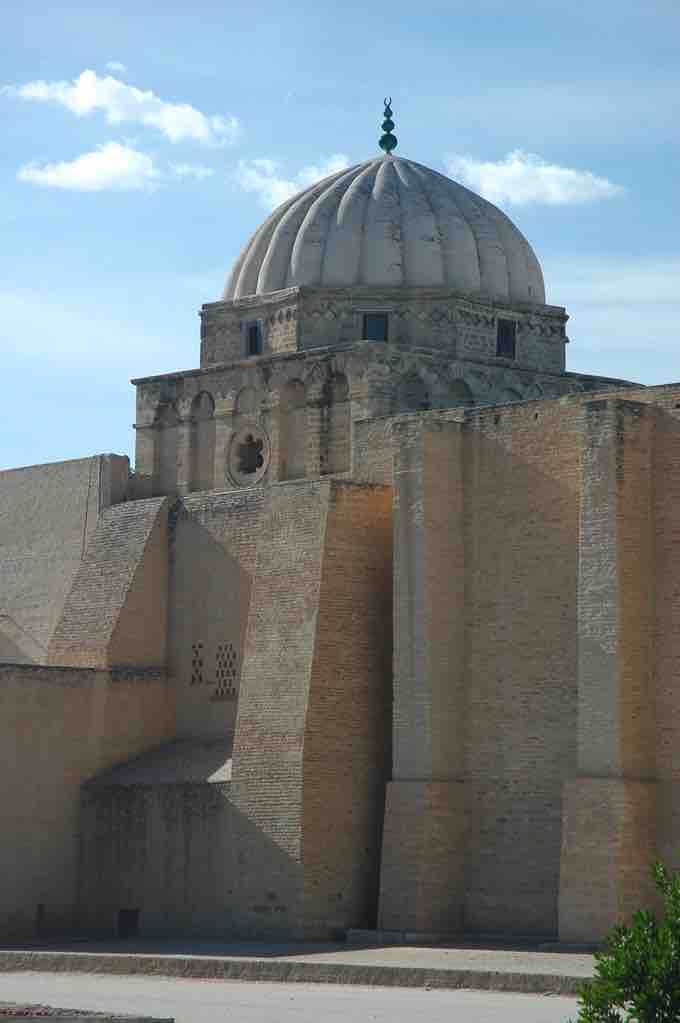Islamic architecture encompasses a wide range of both secular and religious styles. The principal Islamic architectural example is the Mosque. Specifically recognizable Islamic architectural style emerged soon after Muhammad's time, and incorporated Roman building traditions with the addition of localized adaptations of the former Sassanid and Byzantine models.
The Islamic mosque has historically been both a place of prayer and a community meeting space. The early mosques are believed to be inspired by Muhammad's home in Medina, which had served as the first mosque. The Great Mosque of Kairouan (in Tunisia) is one of the best preserved and most significant examples of early great mosques. Founded in 670, it contains all of the architectural features that distinguish early mosques: a minaret, a large courtyard surrounded by porticos, and a hypostyle prayer hall.

Dome of the mihrab (9th century) in the Great Mosque of Kairouan, also known as the Mosque of Uqba, in Kairouan, Tunisia
The Great Mosque of Kairouan (in Tunisia) is considered as the ancestor of all the mosques in the western Islamic world.
Ottoman mosques and other architecture first emerged in the cities of Bursa and Edirne in the 14th and 15th centuries, developing from earlier Seljuk Turk architecture, with additional influences from Byzantine, Persian, and Islamic Mamluk traditions. Sultan Mehmed II would later even fuse European traditions in his rebuilding programs at Istanbul in the 19th century. Byzantine styles as seen in the Hagia Sophia served as particularly important models for Ottoman mosques, such as the mosque constructed by Sinan. Building reached its peak in the 16th century when Ottoman architects mastered the technique of building vast inner spaces surmounted by seemingly weightless yet incredibly massive domes, and achieved perfect harmony between inner and outer spaces, as well as articulated light and shadow. They incorporated vaults, domes, square dome plans, slender corner minarets, and columns into their mosques, which became sanctuaries of transcendently aesthetic and technical balance and may be observed in the Blue Mosque in Istanbul, Turkey.
The Blue Mosque, Istanbul, Turkey
The Blue Mosque represents the culmination of Ottoman construction with its numerous domes, slender minarets and overall harmony.
Architecture flourished in the Safavid Dynasty, attaining a high point with the building program of Shah Abbas in Isfahan, which included numerous gardens, palaces (such as Ali Qapu), an immense bazaar, and a large imperial mosque. Isfahan, the capital of both the Seljuk and Safavid dynasties, bears the most prominent samples of the Safavid architecture, such as the the Imperial Mosque, which was constructed in the years after Shah Abbas I permanently moved the capital there in 1598.